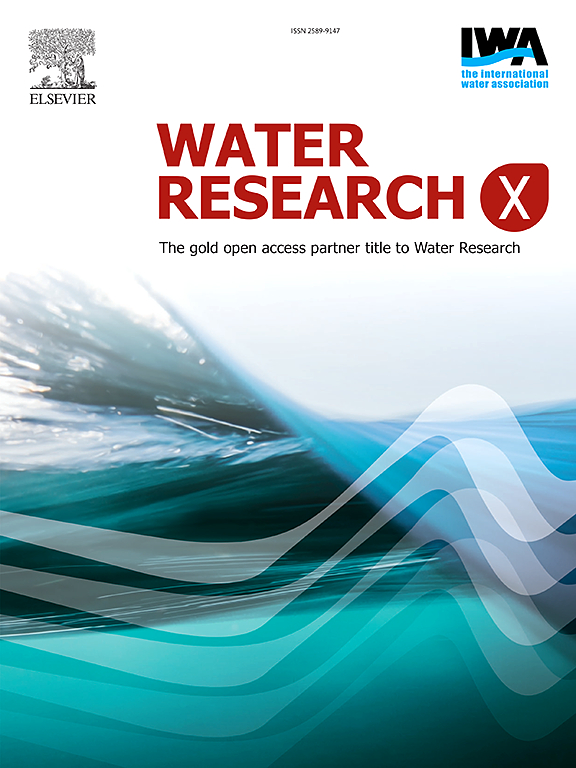Mechanisms of N2O production in salinity-adapted partial nitritation systems for high-ammonia wastewater treatment
IF 7.2
2区 环境科学与生态学
Q1 ENGINEERING, ENVIRONMENTAL
引用次数: 0
Abstract
Partial Nitritation/Anammox (PN/A) can achieve green, economical, and efficient biological nitrogen removal; however, the PN process contributes significantly to nitrous oxide (N2O, the third most important greenhouse gas) emissions. Balancing the stability of PN systems while reducing N2O emissions, particularly under varying salinity conditions, is a key challenge in applying PN/A for high-salinity and high-ammonia wastewater treatment. This study explored the long-term effects of salinity on PN performance and N2O emissions in PN systems treating high-ammonia wastewater. The results showed that the specific ammonia oxidation rates of the control and two salinity-acclimated PN reactors were 78.84, 75.03, and 42.60 mg N/(g VSS·h), indicating that low salinity (2.5 g NaCl/L) had minimal effect, while high salinity (10 g NaCl/L) significantly inhibited ammonia-oxidating bacteria and associated nitritation processes. Moreover, N2O emission factors increased from 0.08 ± 0.04% to 0.24 ± 0.03% as salinity rose from 0 to 10 g NaCl/L. Further analysis revealed that salinity stimulated N2O production in both aerobic and anoxic stages. Particularly, the N2O production increased by 2.84–11.14 times in the aerated stage and by 0.61–2.04 times in the nonaerated stage (i.e. anoxic and settling stages). Isotopic pathway analysis indicated that salinity enhanced N2O production primarily by stimulating the nitrite reduction pathway. Additionally, the mechanism investigation examined the combined effects of salinity-induced changes in sludge properties and microbial community on N2O emissions. These findings provide valuable insights for applying PN systems to treat high-strength wastewater and understanding the mechanisms of N2O emissions.

求助全文
约1分钟内获得全文
求助全文
来源期刊

Water Research X
Environmental Science-Water Science and Technology
CiteScore
12.30
自引率
1.30%
发文量
19
期刊介绍:
Water Research X is a sister journal of Water Research, which follows a Gold Open Access model. It focuses on publishing concise, letter-style research papers, visionary perspectives and editorials, as well as mini-reviews on emerging topics. The Journal invites contributions from researchers worldwide on various aspects of the science and technology related to the human impact on the water cycle, water quality, and its global management.
 求助内容:
求助内容: 应助结果提醒方式:
应助结果提醒方式:


